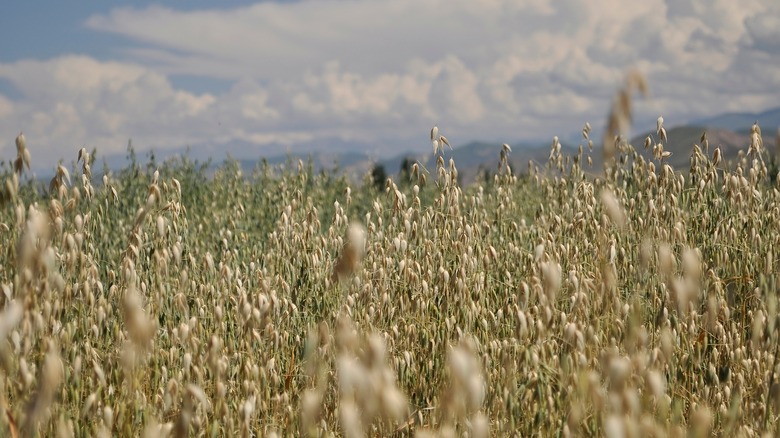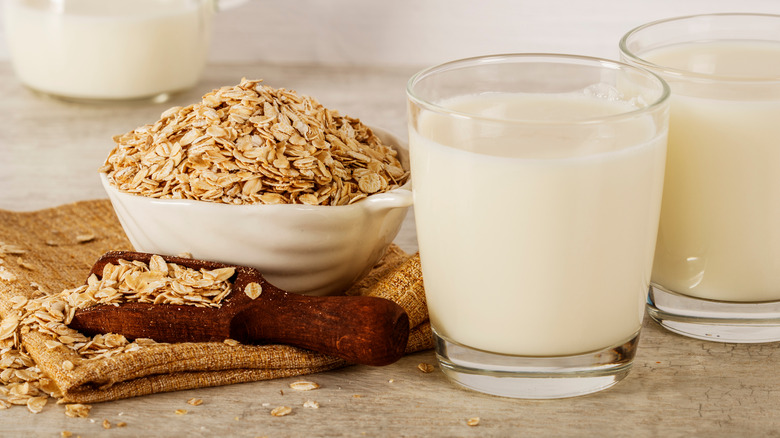The Reason That The Oat Industry Is Currently In Shambles
The immediate future of the oat industry is currently less grim or expectant than chaotically up in the air. "It's kind of like trying to nail jelly to the wall," said Randy Strychar, president of Oatinformation.com, told Food Business News. "We can't seem to get a good grasp of what's going on because there are too many unknowns right now in the oat market."
The information Strychar is struggling with in particular is that of oat production. Last year, there was a drought that caused oat yields to drop dramatically at a time when demand for oat milk skyrocketed. Heavy snow, however, made the ground moist, meaning farmers could increase the acreage of their crops. So, both Canadian and American statistics are expecting an increase in oat production. That said, the same moistening also caused farmers to seed later in the year than they normally would. So, the oats will grow over the summer in conditions of extreme heat, which could damage the crop. "We've only had the crop in the ground for about 30 days, and it's a 95-day crop, and we've got some critical growth periods coming up," Strycher commented. Moreover, late seeding historically yields low crops.
This is a very different tone than the news given by DRGNews, which says that South Dakota's oat production should be 118% over last year's with each acre producing 19 more bushels than it did in 2021.
The oat industry has been all over the place
If you don't follow the oat market, the idea that oats can be exciting might strike you as strange. However, oats have enjoyed a center stage status for many of the travails the last year has provided.
As mentioned, last summer saw severe droughts. Bloomberg reported that it brought Canada's oat production to an 11-year low while the United States saw the smallest yield ever. Even if you ignore products like oatmeal and oat milk, this struck at supply issues for granola and popular breakfast cereals.
But we can't ignore oat milk. Food Dive covered how the oat shortage as well as supply chain issues pressured Oatly into making less oat milk to cover the rising cost of oats. Except Oatly was enjoying astronomical success — so much success, in fact, that they could not keep up with it.
Then, Russia invaded Ukraine in February, prompting the Ukrainian government to place an export ban on wheat and oats (per ABC News). Although Ukrainian oat production does not have the exact same environmental concerns as the North American farms, it is a major contributor to global oat supplies. So, even if oat farms manage the optimistic increase of yields, the global market is not in place to make a full recovery.

